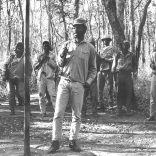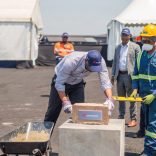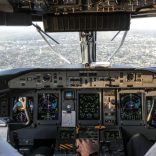Mozambique: Niassa Combatants Sector works on signage, requalification of historical sites
Gonçalo Mabunda: The peaceful art of weapons – Mozambique

Gonçalo Mabunda began working in Maputo’s artistic milieu as gallery assistant at the Centro D’Artes in 1992. Today he exhibits his art around the world, his works having been shown in Tokyo, London and Düsseldorf.
In these places, “People get curious and enthusiastic when they see these works”.

Ironic Thrones
Mabunda’s workshop is filled with remains of shotguns, AK-47s, rockets and chairs made using these artefacts. In his online site, Mabunda says the thrones – one of his trademark images – function as attributes of power, tribal symbols and traditional pieces of ethnic African art. They are also an ironic comment on the violence that he experienced as a child during the Mozambican civil war.

Collection of material
In 1995, the Christian Council of Mozambique launched the project “Transforming Weapons into Hoes”. The project continues to be one of the suppliers of the material Mabunda uses to create his pieces. But nowadays, Mabunda told DW Africa, “I can also buy war artefacts that have already been destroyed” as scrap metal.

Art with assistance
Mabunda needs assistants to complete his works, and the decommissioned war material requires special treatment to be worked artistically. Mabundo oversees his assistants but also exchanges ideas with them, creating joint works. Something that, in his opinion, politicians should also do.

The face of war
Mabunda says people are impressed with his ability to turn material used to sow death and poverty into positive art. But he spares no criticism. “War is a situation in which only a small group of people decide how we live,” he says.

The face of war
The more recent conflict in the country worries the artist. “It was 16 years of war and 22 years of peace. Anyone born in 1992 lived in freedom. I cannot explain how we went back to this situation.” Perhaps that’s why the masks he produces with war material look more frightened than frightening.

Guns speak of peace
Guns can also speak of peace – at least those that pass through Mabunda’s hands. His masks express the horror of killing. Mabunda’s artistic journey has encompassed South Africa too, more precisely Durban, thanks to the help of South African artist Andries Botha. At age 18, Mabunda had the opportunity to take a metal and bronze course there, he told the Portuguese weekly Expresso.

International recognition
Born in 1975, Mabunda has worked as a full-time artist since 1997. By recycling war material he has created his own unique style, recognised throughout the world. Superimposed on his artwork is the message of promoting peace in a country where the weapons that speak of war have still not fallen silent.
By Romeu da Silva (Maputo)












Leave a Reply
Be the First to Comment!
You must be logged in to post a comment.
You must be logged in to post a comment.